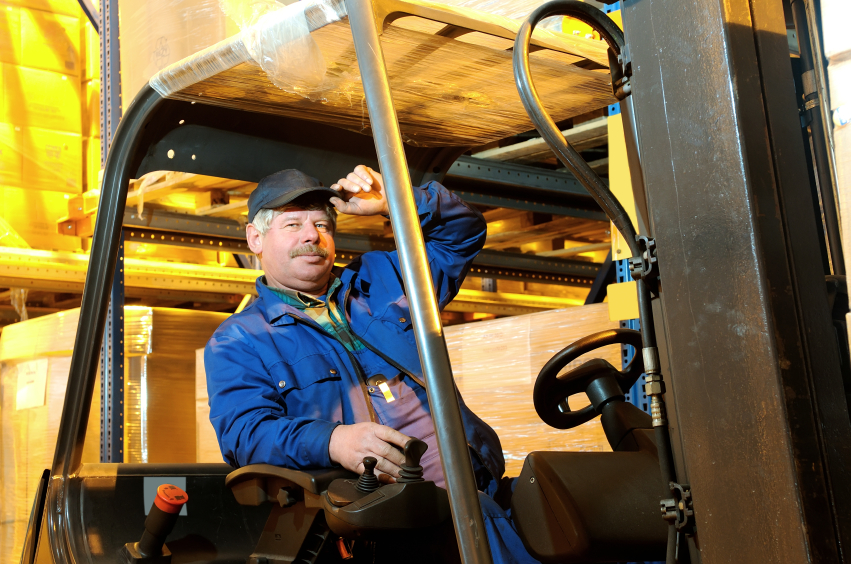
|
Here are the basic ingredients that identify a qualified forklift operator.
Of Age
Forklift operators must be over the age of 18. No one under the age of 18 may operate a forklift or any other powered industrial truck.
Certified in the Specific Lift Being Operated
Operators must be trained and evaluated in the specific make and model of forklift they will operate. Certificates are not valid for other types of forklifts. The certificate will include:
- The name of the operator,
- The date of the training,
- The date of the evaluation, and
- The identity of the person(s) performing the training or evaluation.
Conducting a comprehensive hazard assessment can help keep your employees safe from hazards. Register now!
Familiar with the Operating Environment
Operators must know the characteristics of the operating environment that can affect the operation of the forklift, including:
- Floor surfaces and/or ground conditions where the vehicle will be operated,
- Composition of probable loads and load stability,
- Load manipulation, stacking, or unstacking,
- Pedestrian traffic,
- Narrow aisle and restricted place operation,
- Operating in classified hazardous locations,
- Operating the truck on ramps and other sloped surfaces that would affect the stability of the vehicle,
- Other unique or potentially hazardous environmental conditions that exist or may exist in the workplace, and
- Operating the vehicle in closed environments and other areas where insufficient ventilation and/or poor vehicle maintenance could cause a buildup of carbon monoxide or diesel exhaust.
Join us on Wednesday, April 1 and you’ll learn how to perform a comprehensive hazard assessment and how to select the most cost-effective PPE to protect employees and assure compliance. Learn More.
Familiar with Rules of Safe Forklift Operation
A qualified forklift operator knows to follow these “rules of the road”:
- Never exceed the speed limit.
- Maintain a clear view of the travel route; travel with the load behind if it blocks the forward view.
- Carry loads with the forks no more than a few inches above the ground or floor.
- Ensure there is a safe distance along the path of travel from the top of the forklift mast or load and any overhead objects (e.g., lights, pipes, ventilation equipment).
- Do not raise or lower loads while traveling.
- Slow down on a wet or slippery floor.
- Stay at least three truck lengths behind another truck.
- Slow down, stop, and sound the horn at cross aisles and other places where line-of-sight vision is impaired.
- Slow down before making a turn; sharp turns can tip the truck.
- Do not pass at intersections or blind spots.
- Stay a safe distance from the edge of a platform or elevated ramp.
- Cross railroad tracks diagonally, if possible.
- Drive slowly and carefully over dockboards or bridgeplates; do not exceed their rated capacity.
- Go up and down grades slowly, keeping the load upgrade and raised only enough to clear the surface on grades of over 10 percent.
Tomorrow, we’ll look at some deal breakers—some behaviors that should result in the immediate suspension of a forklift operator’s credentials.
